- by New Deal democrat
There is some housing data out today; I’ll probably have a post up about it tomorrow at Seeking Alpha, and I’ll link to it here.
Meanwhile, the jury is still out on the effects of the “reopening” of many States on coronavirus infections.
Here’s a graph of the 7 day average of tests, new infections, hospitalizations, and deaths, divided between the Boston, NYC, Philadelphia metro areas and Michigan on the one hand and everywhere else:
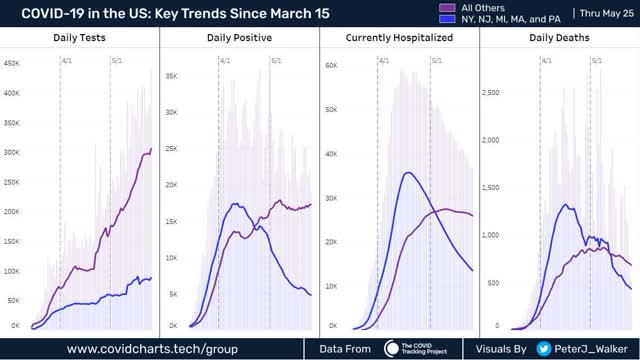
Testing has continued to increase dramatically, while cases “everywhere else” have plateaued or possibly begun to slightly rise again. This still shows hospitalizations and deaths declining.
On a nationwide basis, new diagnoses have only declined by 3%, from 22,700 to 22,000, in the past eleven days, during which testing has roughly plateaued at the 350,000-400,000 level daily:
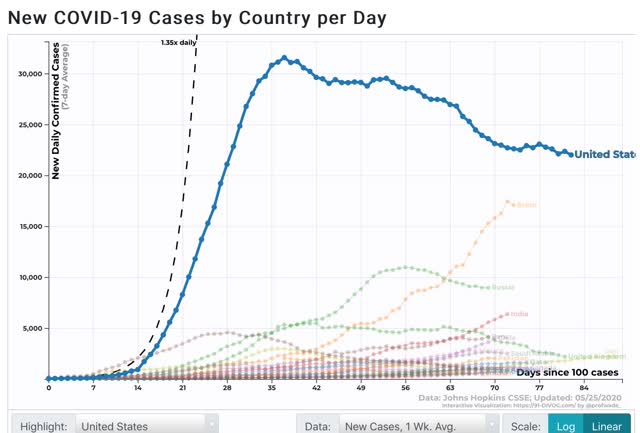
But Scott Gottlieb pointed to data yesterday showing that hospitalizations have begun to increase:
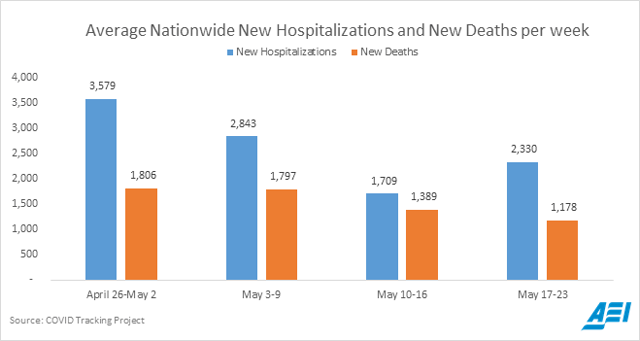
If tests continue in the recent range for two more days, that will give us a more “clean” period of 14 days over which to compare sequential 7 day averages. That would give us a better look at whether what is going on with diagnoses is an artifact of increased tests; or whether we are seeing an incipient “second wave” from overly-relaxed restrictions in many States.
On the bright side, Oregon looks like it has become the first moderate-sized State (its population is 4.2 million) to “crush the curve.” In the past seven days, it has averaged only 9 new diagnoses per day:
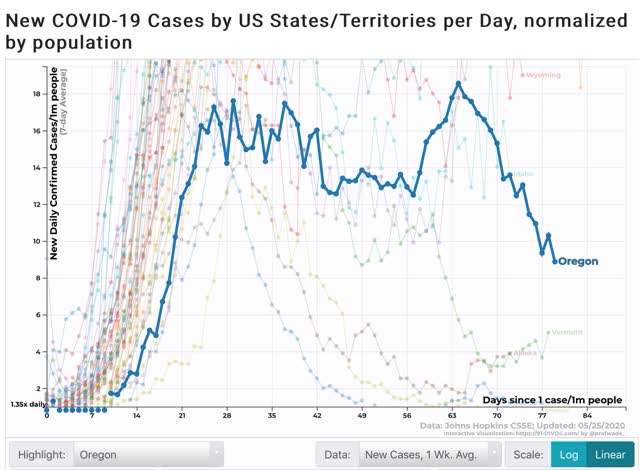
It’s probably still not quite big enough to get the national attention that would serve as an example for other States.
Meanwhile, Trump’s polling on the handling of the coronavirus continues to worsen:
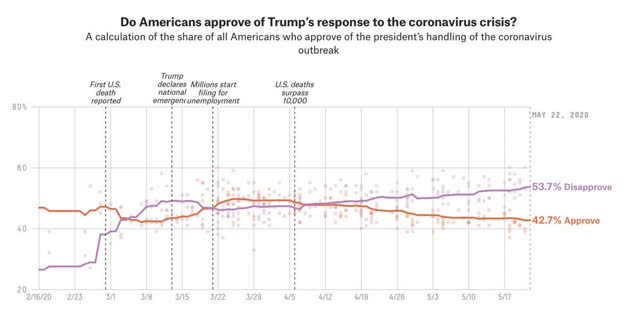
Note the brief “rally round the flag” increase in approval during the three week period that started when Trump said that the virus was a serious threat and ended when he reverted to wanting everything “opened up,” and the slow but steady erosion in approval since.
This correlates with the brief “rally round the flag” effect as to his overall approval:
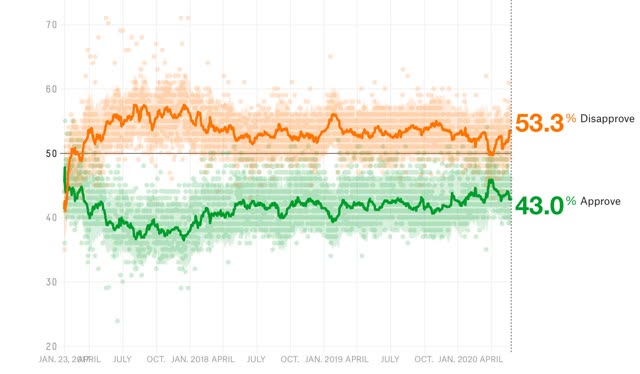
Trump’s approval has always been at its worst when he appears both cruel and incompetent simultaneously, and calling on people to get sick and die so that the economy can improve looks like just such an event.
Whether and to what extent infections increase is going to be driven by abatement in social distancing, mask-wearing, and exposure to confined indoor spaces with recirculated air. The economy is going to respond to how people respond to the continued threat of infections. Since Trump is incapable of changing who he is, what happens with infections and the economy is going to drive how much his vote in November deviates from 43%.